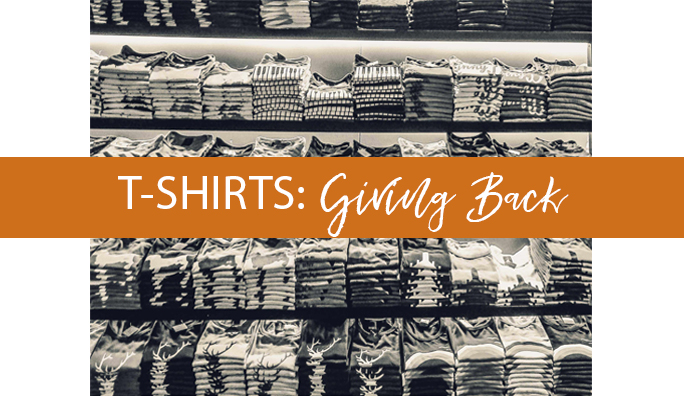The Shirt on Your Back, Giving Back

.
The power to initiate positive change in the community through charitable give-back movements seems to be on the social responsibility radar for most businesses lately. T-shirts in particular are proving to be a successful tactic to aid deserving charities. Most notably from this past year from the popular HGTV series, Fixer Upper, Chip and Joanna Gaines used their fame and Magnolia brand to give back to hurricane victims through 100% of the profits they made on their “Texas Forever” t-shirt campaign raising over $2.5 million.
Similar to the HGTV stars, though on a smaller scale, a printing company in Orlando, FL designed this shirt for Hope for the Philippines, a group that raised money to help the country recover after the devastating Typhoon Haiyan in 2013. All funds were forwarded to Operation Walang Iwanan, which provides food, shelter and clothing to those affected by the typhoon.
Another way t-shirts went a long way was for the Subway Bedrace for Bridging, an annual event where teams race down a hill on real mattresses, to raise money for an organization called Bridging. Bridging is a Twin Cities-based organization that helps families transition out of homelessness and poverty to make a fresh start in life. A printing company created T-shirts designed by the nonprofit to be distributed to teams that reached a certain fundraising threshold. They raised $80,000 overall.
The list goes on and on as more resources become available to efficiently and cost-effectively print on t-shirts. Needless to say, branded tees are reasonably priced and easy to decorate which will draw customers to your brand.
With that being said, there are a variety of resources available to print decoration on tee’s, only making it harder to differentiate among the different decoration methods. Take a look at this list we have compiled to learn more about different decoration methods:
- Screen printing– uses an image which is separated into a series of single-color designs. A mesh screen is placed over the fabric, and one color of ink is pulled down across the screen, allowing the ink to seep through onto the material in locations dictated by the design.
- Direct-to Garment (DTG) – uses inkjet technology to print a design right onto the garment, with high resolution and no halftone dot or image quality lost.
- Heat transfer– the design is printed on a transfer material that has heat-activated adhesive on one side and is applied to the garment with high temperature and pressure.
- Dye sublimation– limited in use, as it can generally only be done on 100% polyester garments. It’s a type of printing that uses heat-sensitive inks – under high temperatures, the ink turns to gas and bonds with the fabric, becoming part of the physical structure of the garment.
- Embroidery– best for polo shirts, jackets, caps and other high end garments.
If you are interested about what branded apparel Blue Fuel offers, visit bluefuelmarketing.com to learn more or call us at 866.535.FUEL.
